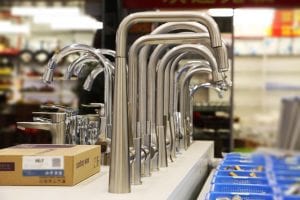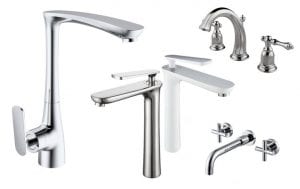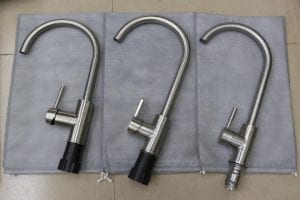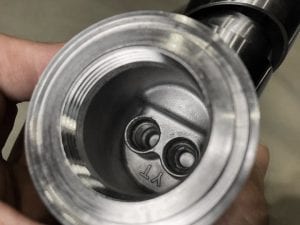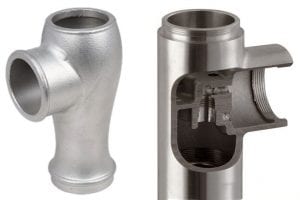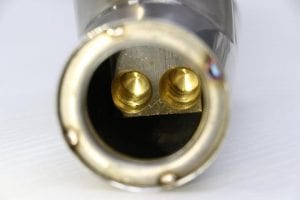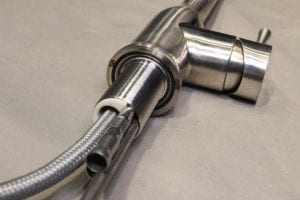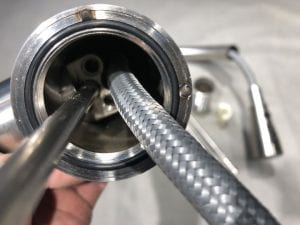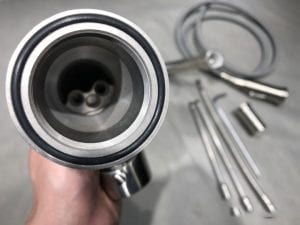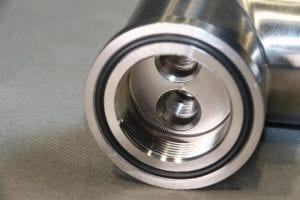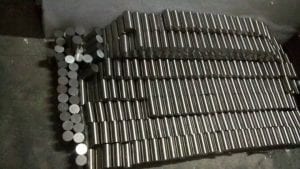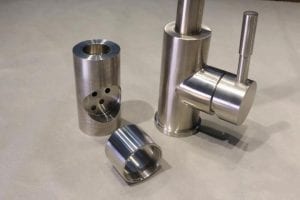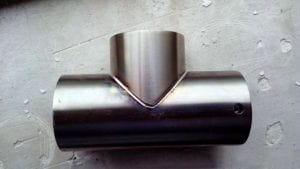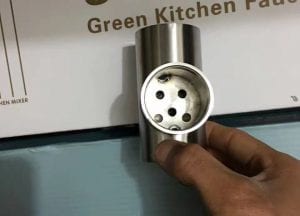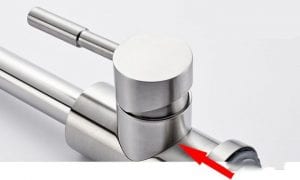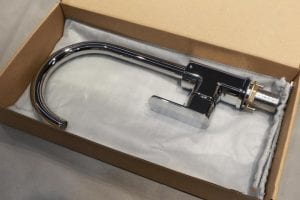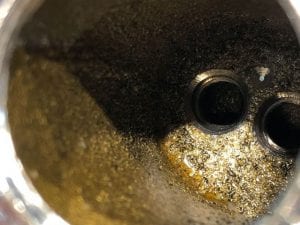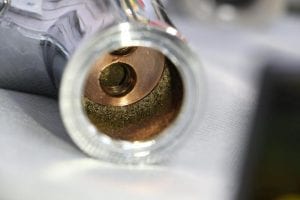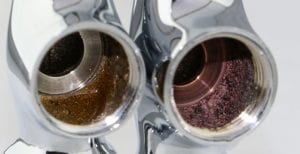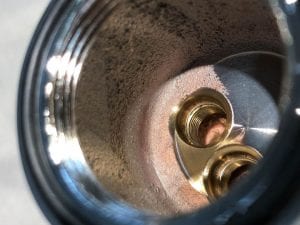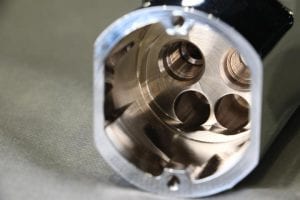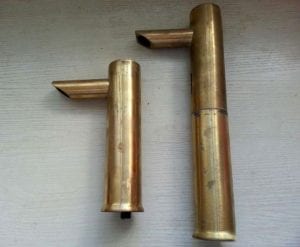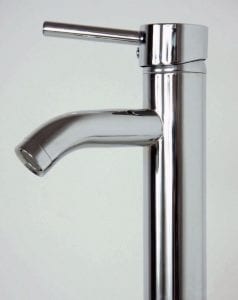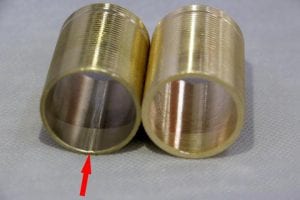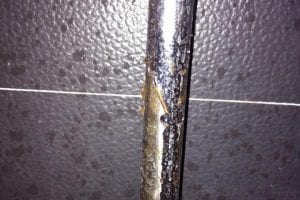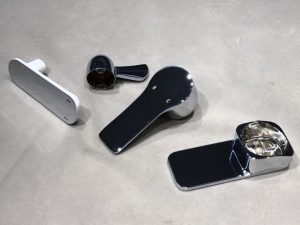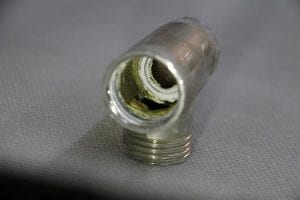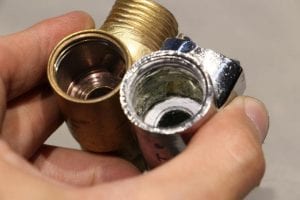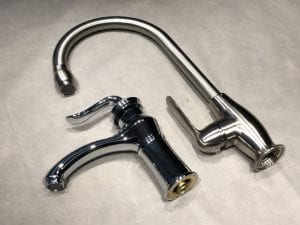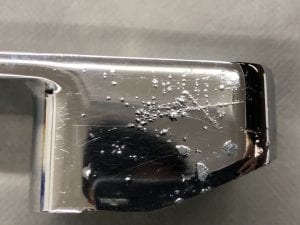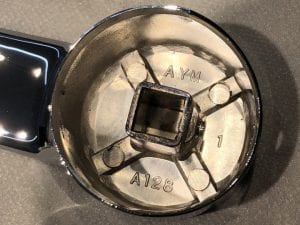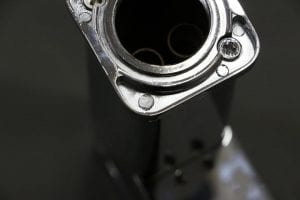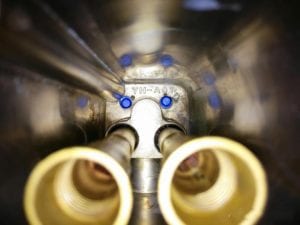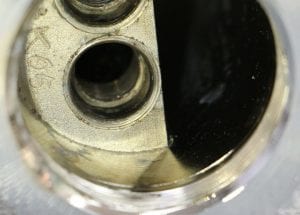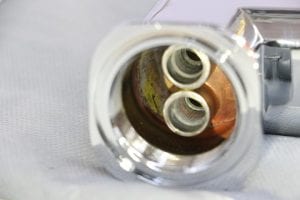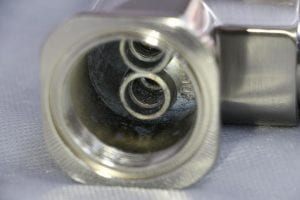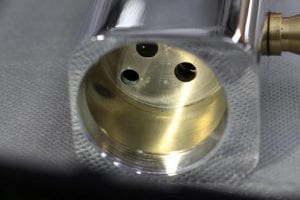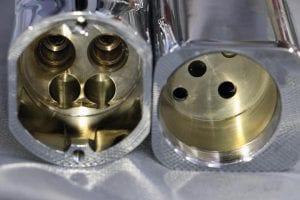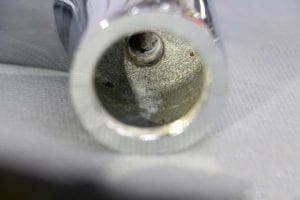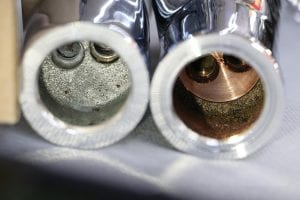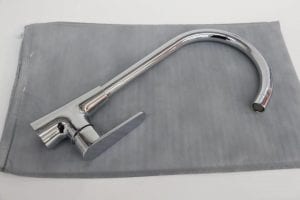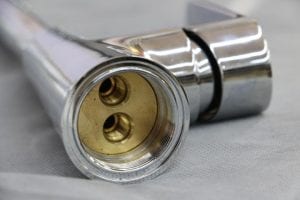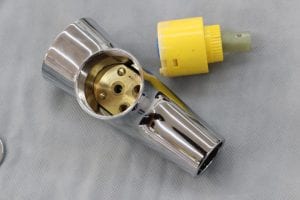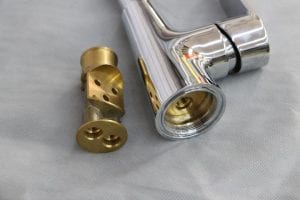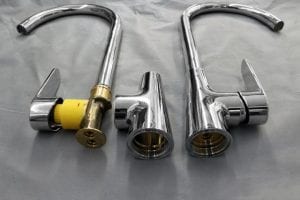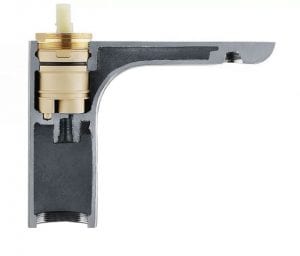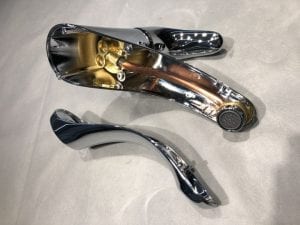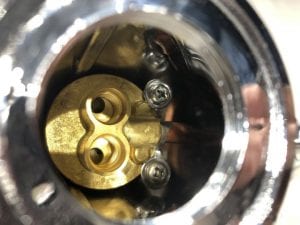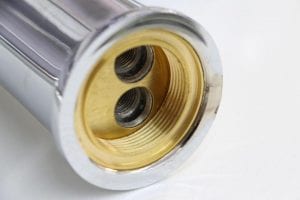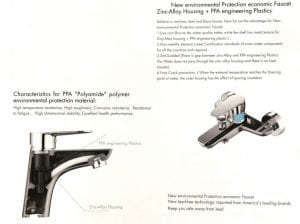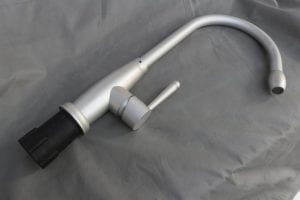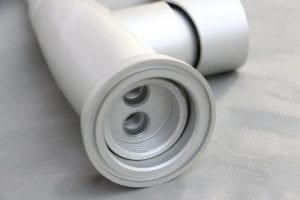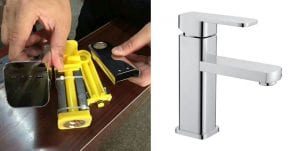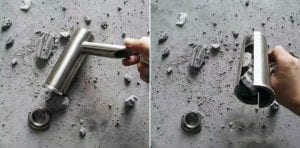How to choose a bathroom faucet? What are the differences between materials and processes?
With the continuous economic downturn in the past two years, the impact of the slowdown in consumption upgrade, In addition, the price of raw materials has been rising year by year, and the sales market, which has already entered the fierce competition, has been suppressed and suppressed. Some merchants and even some well-known brands are attacking the market with the most inferior products at low prices. Many manufacturers that cater to the situation are also refreshing the bottom line of product cost over and over again. The entire kitchen and bathroom hardware industry seems to be entering an unprecedented chaos! Merchants who were serious about selling good products were finally killed by low-cost group purchases of thousands of inferior goods. This is the ending that everyone does not want to see again in 2020.
There are not many materials with pictures and texts on the Internet, so we personally took a lot of materials photos fo
r your reference. But I hope that the content of the post can be fully respected, and do not reprint or steal pictures without permission~ Thank you
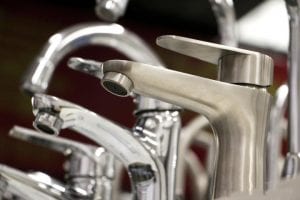
Hardware and building materials are full of materials, specifications and styles, Even many sellers who are new to the hardware industry are not clear on their own. The same is true for consumers, who want to buy something but can’t express what it is called. I believe this experience is something many friends have had,However, there are too many product names, and the dialects and names of different regions are slightly different. It’s not convenient to repeat it here.
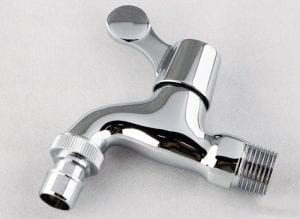 In order to distinguish two major categories of products in the hardware industry. The type of product shown above is called “faucet”. Various functional titles can be added, such as “washing machine faucet”, “multifunctional faucet” and so on.
In order to distinguish two major categories of products in the hardware industry. The type of product shown above is called “faucet”. Various functional titles can be added, such as “washing machine faucet”, “multifunctional faucet” and so on.
And these types of products are generally called “leading” in the hardware industry. Of course, we can also add various functional or structural titles, such as “kitchen faucet”, “basin faucet”, “split faucet”, “pull faucet”, “wall faucet” and so on.
After roughly talking about the classification, we will return to the topic: material and craftsmanship
Please remember one sentence: all materials can be made into any style, any shape, and any appearance color! Therefore, you must not distinguish the quality of the product by its appearance or weight alone!
1. Let’s start with the most popular stainless steel products:
304 stainless steel is a grade of stainless steel produced in accordance with the American ASTM standard. 304 is equivalent to our country’s (06cr19ni10) stainless steel. Japan also quotes the American name and calls it: SUS304
SUS304 stainless steel, it is a very common stainless steel, also called 18/8 stainless steel in the industry. Its metal products are resistant to high temperatures and have good processing properties, so they are widely used in industries and furniture decoration industries and food and medical industries.
However, in recent years, various faucets made of 201 stainless steel have emerged in endlessly. For our ordinary consumers, the easiest way to identify stainless steel grades is to distinguish them through potions! The naked eye and the magnet cannot distinguish stainless steel! Stainless steel identification potion is available online.
Use potions to identify stainless steel grades
 3. Inferior stainless steel reacts
3. Inferior stainless steel reacts
It is recommended that everyone try not to buy stainless steel faucets below the SUS304 grade standard, because SUS304 grade or above can reach the safe food hygiene range. Inferior stainless steel will have the problem of hexavalent chromium precipitation, hexavalent chromium can cause kidney failure, damage liver function, and cause reproductive genetic health problems. The 201 material also has the problem of excessive manganese. These are materials that are extremely harmful to human health, and I hope they can attract everyone’s attention!
The material problem is basically finished, let’s focus on SUS304 stainless steel products as an example, after all, 201 material cannot be distinguished by the naked eye. Pictures and texts don’t make much sense~
Stainless steel faucets that all look the same. It’s actually quite different!
①Stainless steel precision castings:
The faucet made of stainless steel was first available, and we had to start with precision casting
Stainless steel one-piece precision casting bottom
From the bottom, it looks like the above picture. The matt, orange peel-like casting texture is the stainless steel precision casting product. This is formed by pouring stainless steel heated to a liquid state into a mold.
The advantages of one-piece molding are obvious: the structure is extremely strong, the inner wall is smooth and delicate, the workpiece size is accurate, the shape is diverse, and the impurities are less…As far as the 304 stainless steel body manufactured by this process is concerned, it will not be damaged in normal use for 30 to 50 years, which is no exaggeration!
Casting texture like orange peel (left);
The main section of the stainless steel precision casting faucet, the casting texture on the outer surface of the workpiece will disappear after processing, but the internal texture will basically remain (right)
However, due to the difficulty of stainless steel precision casting, it is necessary to solve the problems of pores and sand holes, The material is hard and tough, and the process of mechanical cutting, polishing and grinding will consume a lot of drill bits and abrasive tools. Therefore, the price of this one-piece casting product is often more expensive!
Stainless steel precision casting
So far, the high-end stainless steel faucet market is still dominated by integral castings.
② “Steel leather core” products: because the early stainless steel precision casting process was immature, the cost was high. At that time, stainless steel was still a rare high-end product. Under the marketing slogan of “zero lead, environmental protection and health”, the end market was naturally expensive!
Therefore, in order to sell high prices at low cost, some manufacturers use thin stainless steel pipes welded to form a shell, which wraps the internal brass drain structure. n this way, the cost of stainless steel processing is greatly reduced, and a large amount of brass is “saved”. (Brass raw material is much more expensive than stainless steel)
From the bottom of this faucet, we can see that this is a shell made of a thin stainless steel tube that is cut to shape and then welded. The internal drain parts are made of only a small amount of copper. Pay attention to the four spot welding traces connecting the shell and the bottom ring, it can be seen that the outer wall is very thin.
The structure of the “steel-skinned core” was quite unfamiliar in the early years. Later, as the processing technology of stainless steel became more and more mature, these products gradually disappeared. However, products with this structure have recently “re-emerged”! And products with pulls seem to have become the “hardest hit”
Products such as “steel skin core” have now turned into various products with pull-out function and reappeared on the market… Pay attention to the two spot welding marks connecting the outer wall of the product and the bottom ring on the picture. (The solder joint on the left shows the thickness of the shell)
The reason is apart from the more popular pull styles in the past two years and fierce bidding. The drawing function also just needs a hollow structure to allow the drawing tube to move to achieve drawing. Secondly, the bottom structure of the pull product is relatively complicated, and it is not easy to see the inside directly. As long as the appearance is beautiful and the packaging is good… Consumers will also be less likely to notice the sluggishness.
After disassembly, the internal splicing is very strong, and you can observe the bottom spot welding part closely.
Even so, we still have a way of distinguishing without disassembling the product. Mainly tap the shell lightly to see if it has a thin feeling, and the weight is often lighter than similar products! Secondly, there are usually spot welding marks left on the back cover at the bottom. This type of product is of lower grade among stainless steel faucet products.
This is the dismantling of the drawing faucet of the precision casting. In contrast, the precision casting is one piece, and the interior is very smooth and delicate.
③Let’s talk about solid rod weldments below: As the name suggests, it is a product processed from solid bars.
The visual sense of the material is hard, the machining marks are obvious, and the corners are delicate and neat.
When we observe from the bottom of the faucet, the characteristic like this is a stainless steel solid bar welding faucet. The traces of delicate turning processing on the bottom are obvious, and the lines are delicate and sharp! Due to its good price/performance ratio, bar weldments are currently one of the mainstream stainless steel faucet products on the market. But it is not the “one-piece molding” or “one-piece casting” claimed by many businesses!
It uses a whole solid stainless steel long rod, cut into a rated length, and then processed by a CNC lathe, and finally welded into a product:
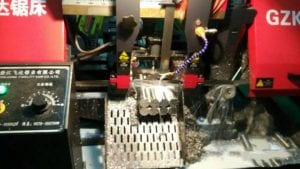 Stainless steel bar cut on CNC sawing machine
Stainless steel bar cut on CNC sawing machine
These two parts are then processed (front), and then welded to form the main body of the faucet (rear) and finally polished/brushed as a whole, so no welds can be seen.
Welding blank
It can be seen that the connecting part of the two rods is finished after external welding and then integrally polished/wired. Therefore, no welding traces can be seen in the finished product, and the appearance is more beautiful. Welding takes place externally, and the quality of the weld is very intuitive. Moreover, they are all advanced laser automatic welding, and there are almost no problems such as uneven welding or missing welding. This product has simple process, low cost, reliable quality and high cost performance! It was very popular in the market as soon as it was launched a few years ago.
But smart people came up with another way:
Solder from inside!
The manual welding of internal welding is not intuitive, and some may only have a small amount of spot welding to fix. As shown in the figure, only two small dots are welded! ! (Three of the five holes in the middle are for water to flow to the spool, and two are for spool positioning)
So “internal welding” goods were born…
Internal welding not only saves several times the welding electricity costs, but also eliminates the overall polishing/drawing process after welding, so this internal welding product is much cheaper than external welding! Durability will also be greatly reduced! !
A clear dividing seam (red arrow) can be seen at the connecting position of the two parts of the “internal welding” product
“Internal welding” products can basically be distinguished through this gap that cannot be wiped off and is easy to hide dirt!
In-bar welding products also belong to the low-grade stainless steel faucet.
A little sort out:
① The high-end stainless steel faucets are mainly casting products, and the bottom of the castings basically has a casting texture;
②There are bar-welded products with high cost performance. For bar-welded products, distinguish external welding or internal welding from the appearance of the joint;
③ “Steel-skin core” is currently mostly found on pull-out faucets, and there are often welding marks on the bottom of the back cover, the skin is relatively thin, and the weight of the product is often lighter than similar.
At this point in the article, how to distinguish the good times of the stainless steel faucet? Everyone must have a count in their hearts, right? Many merchants on AMZ grandly claim that their stainless steel faucets are “one-piece casting”, but what about it? I believe that everyone holds the picture by themselves and knows how to distinguish it~
2. Let’s talk about the historical brass faucet:
Brass has good plasticity, workability, corrosion resistance and adhesion of electroplating. It is currently one of the most mature materials for making faucets. Generally, excellent brass faucets will be made of brass with the national standard HPb59-1 or higher grades according to different processes.
Some black-hearted manufacturers will use low-label 55#, 53# and even recycled scrap copper to make faucets! Such faucets are not only vulnerable to brittle fracture due to insufficient material toughness, but also more lead is precipitated and contains many unknown and potentially harmful impurities.
At present, we only take HPb59-1 brass products as examples~
Copper faucets generally have casting, forging and welding processes
Among them, casting is mainly divided into “sand casting” and “gravity casting”.
[In a broad sense, as long as the casting method of pouring liquid metal from top to bottom into the mold is called “gravity casting”. But “gravity casting” in the narrow sense of general hardware refers to “metal mold casting”. That is, the workpiece is cast using a metal mold. Different from sand foundry (sand mold)]
① Sand foundry castings (sand mold casting):
The copper material is heated to a liquid state and then injected into the sand box mold for forming. Since the copper parts made by sand casting are relatively loose in structure, it is easy to have trachoma penetrating the shell, so after the shell is formed, it must be soaked with special leak-trapping paint (glue) and filled with negative pressure before machining. Therefore, a transparent paint layer is left in the shell.
In the above picture, there is a strong sense of sand left by obvious sand casting inside the shell, accompanied by small black dots, and a golden or transparent paint layer. This is a copper foundry casting. Foundry castings are often mixed with molding sand and other impurities in the faucet body.
For foundry castings, pay attention to the yellow trap glue that is obviously different from the copper color. The exposed material of the organically machined turning parts is hard and delicate, and the gloss is high, which shows that it is at least a copper faucet!
Foundry castings are often mixed with molding sand and other impurities in the faucet body. This type of faucet is a relatively low-grade product among brass faucets. Because the “foundation” of the shell itself is not good, there are many small trachoma, even after grinding, polishing, and electroplating. The appearance is often rough.
②Gravity casting (metal mold casting):
Gravity casting
The advantages of gravity casting are that the workpiece is well formed, precise in size, high in flatness, strong and compact in structure, and there is almost no residue. The product has good pressure resistance and long service life. It can manufacture various products with complex shapes, which is one of the more ideal manufacturing processes in brass faucets. Middle and high-end brass faucets are basically gravity castings.
Pay attention to the difference between the two processes with or without paint layer. The one on the left that looks like water is the paint layer.
The picture above is a gravity casting. There will be traces of pitted surface similar to spray paint inside the gravity casting parts, there are few particularly strong feelings of sand, and there will be no traces of trap glue.
③Forging (red punch):
The advantages of forged parts are similar to those of gravity casting: good forming, precise size, high appearance flatness, and high structural density. The product has good pressure resistance and long service life.
Forging is to heat a metal blank and place it into a die to press it (a bit like a moon cake), so the forging process is also called “red punch” in the industry.
In the picture above, the interior of forged parts is often full of beautiful machining lines
The workpiece after forging is solid and cannot be used. Need to use numerical control equipment to hollow out the solid workpiece. Therefore, the inside of the workpiece is almost composed of exquisite mechanical turning lines, the texture is hard, slightly yellow, and the gloss is very good.
However, due to technological limitations, it is difficult to forge products with complex shapes. Therefore, some relatively simple styles of high-end copper faucets will be forged.
④Profile welding faucet:
Copper profile welding faucet, although the process is relatively simple, but the quality is relatively reliable. Just like stainless steel welding, in terms of faucets, copper welding technology is even more mature.
Advanced automatic welding line, the flux is applied to the workpiece
Copper pipe welding faucet
Like this kind of tubular (or other shapes) horizontal and vertical faucets, it is possible to be copper pipe welding parts. From the bottom, it should look like a copper-colored tube. Some foreign brands prefer welding technology, which is simple and low-cost. Medium and high-grade copper faucets will also use welding technology.
Seeing this, I guess there will be many friends asking: “How do I choose the copper faucet and the stainless steel faucet?”
Stainless steel products are mainly valuable in craftsmanship, while copper is valuable in raw materials. Stainless steel is tough and hard, and it consumes a lot of drill bits and abrasive tools. The raw materials of copper are almost twice as expensive as stainless steel, but the processing aspects are mature and relatively simple.
The problem of lead precipitation from brass faucets has been dispelled by the media and industry colleagues. Lead precipitation from qualified brass faucets is very small, and may even be lower than the lead we inhale in car exhaust every day. Even many high-end products will use the “lead washing” process.
Stainless steel products have just emerged in the early years. Manufacturers of stainless steel products have exaggerated the hype by constantly amplifying the lead problem of brass faucets. In fact, in the stainless steel part of the article, we also clearly mentioned that inferior stainless steel and hexavalent chromium are definitely not less harmful to the human body than lead…
You can’t compare the low-end products in the brass faucet to the high-end products in the stainless steel faucet~ right? Therefore, in the qualified products, I basically answer the questions like this; “Don’t worry about it, just choose the style~”
3. Steel pipe leading:
Then the copper pipe welding faucet mentioned above. Some “savvy” manufacturers found that the faucets have been electroplated, and it is difficult to distinguish whether the finished product is steel or copper. So they began to have steel pipe faucets that imitated copper pipe faucets.
Especially this style, the appearance and workmanship are poor. The suspicion of “pipe leading” is very high!
Steel pipes generally have a weld (left), but copper pipes do not (right)
There is really no model of a steel faucet around, so let’s use these two parts to show it. From the bottom of the faucet, is it steel or copper? It’s probably the same difference…
Steel pipe + poor-quality electroplating will cause serious peeling in the future
The adhesion of the electroplating of the steel itself is poor, if it is high-quality electroplating, it can last about three to five years. But the manufacturer of this type of faucet originally wanted to save costs, so such a faucet will last a year or a half, and the plating will fall off…Steel faucet is a relatively low-end product in the faucet.
4. zinc alloy faucet
The “alloy faucet” usually referred to by merchants refers to the “zinc alloy faucet.”
Zinc alloys are generally based on zinc and added with other elements. Commonly added alloying elements include low-temperature zinc alloys such as aluminum, copper, magnesium, cadmium, lead, and titanium. Zinc alloy has the advantages of low melting point, good fluidity, and good plasticity. It is easier to create a variety of shapes. Die casting is the main process for manufacturing zinc alloy parts.
Zinc alloy has good corrosion resistance in the atmospheric environment, so many small hardware parts that we come into contact with in daily life are made of zinc alloy. For example: various door handles, metal drawer handles, zipper buckles for clothes, belt straps, and various metal parts (except chains) on bags…In the faucet industry, zinc alloys are generally used to make faucet handles.
At present, more than 80 to 90% of the handles of the faucet are zinc alloy die-castings, whether in the domestic market or foreign markets.
Can such a good material be used to make a faucet?
the answer is negative. Because the corrosion resistance of zinc alloy in water is not good, water will promote electrochemical corrosion between zinc alloy crystals. Moreover, the corrosion rate is very fast, and the casting will rot soon!
Inside the long-term used zinc alloy angle valve. Corrosion, blistering, oxidation…Substances harmful to the human body will continue to precipitate. In the end, the material becomes brittle, and when it needs to be dismantled and repaired, it often breaks as soon as it is screwed. It may even be unable to withstand the water pressure burst, causing “water overflowing golden mountains”
I believe that many of my friends have encountered the experience of “one twist and break”. Seeing such a product inside, people who don’t know how to do it might say, “Oh, it’s normal to have scale after using it for a long time…” But people who know how to see it will know “This is made of zinc alloy.”
Compare the copper angle valve that has been used for many years (left)
Various zinc alloy faucets can be made into electroplating appearance (left) or brushed appearance (right)
As mentioned earlier: “Any material can be made into any style, any shape, any appearance color!”
So, how do we simply distinguish them from their appearance?
Once installed, or used for a long time, you can observe its surface:
The surface of zinc alloy parts is blistered, peeled off, and the inside is gray, often accompanied by white powder… This is a typical feature
After the product has been used for a period of time, the appearance of the main body has electroplating blistering, shedding, and the inside is gray, often accompanied by white powder… These characteristics are undoubtedly zinc alloy faucets.
Observe the bottom of newly purchased products:
The die-casting process will have these small round holes (four round)
Zinc alloy parts are die-casting process, so there are often these small round holes left when demolding. Raised numbers also often appear on zinc alloy die castings.
For example, the base of this faucet is obviously made of zinc alloy from the “small dots”
Looking at the inside again, it is flat without casting marks, no machining and turning marks, and the color is gray. There are also die-cast raised numbers. It can be judged that this is a zinc alloy faucet!
The picture above is also a zinc alloy die casting leader! Although the interior is relatively smooth and clean, there are still gray-white mildew-like oxidation marks inside. From this feature alone, it can be basically determined that it is made of zinc alloy. Note that there are many small orange spots with black circles near the word “K05”, which is also one of the important characteristics of zinc alloy materials!
As long as you see an orange dot with such characteristics, no matter how beautiful it is, it must be a zinc alloy product!
The above picture, with yellow or off-white smoky traces, is basically a zinc alloy product.
In order to increase the adhesion of the chrome-plated layer, the first few layers of the electroplating process will have copper plating, so the color of the copper left inside can easily be mistaken for “it is copper”. The zinc alloy material is soluble in acid and alkali so that it leaves a unique “yellow and white smokey trace” after electroplating in various electroplating solutions.
The internal appearance is black, dull, dull, typical grayish white moldy oxidized patches or small spots. The material has no machining marks and casting marks, and no hard feeling.
The picture above is almost the most inferior zinc alloy material. It is gray-black and gray-black. It can be judged that there are many impurities in the raw material (suspected of recycled materials). This kind of high-impurity zinc alloy material can be mixed with any metal, and the harm to the human body is even more self-evident!
High-quality zinc alloy products can easily be fake! In the absence of contrast, look at the gloss, look at the turning texture… are they all very much like brass forgings? But the small orange trace with black edges under the right hole betrayed it. There are also white smoky marks inside the left hole.
Compare it with the previous copper forgings. The one on the left is a copper forging, and the one on the right is a zinc alloy die casting.
The copper piece on the left: ①The gloss is much higher; ②There are no “orange dots”, “smoky marks”, “mouldy oxidation spots” and other features; ③The material has a strong sense of hardness.
The zinc alloy part on the right: Although the interior is flat, there are still many small protruding points on the turning texture. This is obviously the “new growth” after the processing is completed because the material itself is easy to corrode
Zinc alloy also has castings:
Although there are obvious casting marks, there are still gray-white smoky marks inside the mouth. The product on the picture is also a category with a lot of impurities
Zinc alloy castings are also suitable for the identification of the characteristics listed previously.
Compare the zinc alloy casting (left) with the brass casting (right). This is a better distinction.
Summarize the characteristics of the zinc alloy faucet: ①The appearance of the main body has electroplating blisters, falling off, and the falling off part is gray inside, often accompanied by white powder; ②There are often round small openings or raised numbers left when demolding; ③Observed from the bottom, there are off-white moldy oxidized spots; ④Exaggerated copper color with yellow or off-white smoky traces; ⑤Black, dull, dull, material without hard feeling; ⑥Orange spots with black circles .
Be wary of any of the above characteristics! In addition, let’s take a long time: don’t distinguish between material and quality by weight alone! In the case of the same appearance size, alloy products may be heavier than brass!
First, because the material is cheaper than brass, the shell is cast thicker than brass. Isn’t it heavier?
Second, it often confuses consumers with weight. Heavy and cheap products will be tempting! Even at the same price, the heavier one may make you hesitate!
Third, alloy products with high purity and good craftsmanship are often sold at high prices as brass products. The last example to compare brass forgings is a good example!
The zinc alloy faucet is mainly the above, I hope everyone will not try to buy the zinc alloy faucet products cheaply. Because the faucet made of zinc alloy is not only easy to break, it may also endanger our health.
5. “Zinc Clad Copper”
We often see many businesses on the Internet writing “Copper Core Leading”. This kind of product is also called “Zinc Clad Copper” in the industry. As the name implies, the exterior is a shell made of zinc alloy, and the part in contact with water is made of copper. It’s a bit like the “steel leather core faucet” mentioned at the beginning.
Zinc-clad copper faucet
Viewed from the bottom of the product, it is a feature: there is a copper part inside and the shell is obviously divided into two materials.
Disassemble the faucet, the inside is such a structure, the copper piece runs through the whole shell. The copper piece is held inside by the valve core.
Take it out completely, the copper piece is actually such a shape.
Note that the high-purity zinc alloy shell is very beautiful, and it can fool most people by posing as copper.
Such a structure is relatively scientific and reasonable. The copper material is used as a part that directly contacts with water and connects the valve core and the elbow. Zinc alloy is used as the decorative part of the whole shell on the outside. It not only meets the relevant national health requirements, but also saves copper. Costs are reduced and many low-income consumers have good choices.
However, many merchants and even brands on a certain treasure have such products under the banner of “full copper”, which is not very kind.
However, due to structural reasons, zinc-clad copper products basically only appear in the kitchen faucet and pull-out faucet. If the basin faucet is not drawn, there are very few zinc-clad copper structures.
(Above) Because of the structure, the basin faucet rarely has a zinc-clad copper structure. Because the water flowing out of the valve core directly contacts the housing
The rare zinc-clad copper structure basin faucet, it is so troublesome if the water does not come into contact with the zinc alloy shell
The rare zinc-clad copper structure basin faucet, the bottom looks like this if it is not disassembled.
6. Started talking about impersonation
For people who consume economically. Copper core faucet is indeed a good choice. But also pay attention to identification and selection.
In the photo, you can clearly see the zinc alloy body behind a decorative copper piece, and the teeth mouth also has typical mildew-like oxidation marks. “Copper flakes” are often oxidized into golden yellow to pretend to be.
Remember the above-mentioned “Zinc-clad copper products basically only appear in the kitchen faucet and the pull-out faucet”.
7. Plastic faucet (PPA material)
There are many advantages of plastic faucets, such as low cost, good sanitary performance, high toughness, corrosion resistance, and good heat insulation performance… The appearance looks no different from copper, and it is easier to meet the certification standards of various domestic and foreign plumbing equipment. Products in this category are currently being exported to other countries
A leaflet about PPA material faucet
Very good new material, it depends on how it will develop in the future~
8. “Space Aluminum” Faucet
The so-called “space aluminum” is actually an aluminum-magnesium alloy that has undergone special treatment such as high-temperature oxidation. The name “Space Aluminum” is actually a rim ball for aerospace aluminum alloys such as 7005 and 7075. The actual material is far from the mark of aviation aluminum alloy.
As a faucet, aluminum alloy has low hardness and poor corrosion resistance. The long-term contact with water, the human body consumes too much aluminum, and is prone to suffering from Alzheimer’s. This middle school biology class has it, right?
“Space Aluminum Faucet”
Aluminum alloy material has low hardness and poor corrosion resistance. The aluminum faucet, which was eliminated more than ten years ago, is now going to re-emerge with a different face?
9. Other “messed up” inferior faucets (all materials are available)
Zinc alloy shell + ordinary PVC plastic + iron block weight gain + copper back cover
Zinc alloy shell + ordinary PVC plastic + iron sand for weight gain + copper back cover. There is no essential difference between this product and the iron block in the picture above. Stainless steel faucets are now beginning to appear in this product! The price is lower, the ex-factory price is less than 4$!
A faucet bought at a very cheap price. Isn’t there something good about this kind of goods?
Cemented stainless steel faucet
I’ve even heard that there is cement filling, but the author has not seen the real thing with my own eyes.
Okay, everyone here has basically mastered the basic knowledge of faucets. If you’re bored, you can go to AMZ, eBay, or the surrounding building materials market and hardware store to go around, identify it from house to house, and check your learning results…
Finally, thank you all for your patience and hope you will find something after reading it!
We believe that only the broad masses of consumers can sharpen their insights and support those who are fighting on the front line and desperately safeguarding their conscience and quality. Don’t make economic and IQ contributions to low-price group purchases of some hundreds or thousands of low-quality products… Only then can the market return to the era of quality competition.
 VIGA Faucet Manufacturer
VIGA Faucet Manufacturer 
